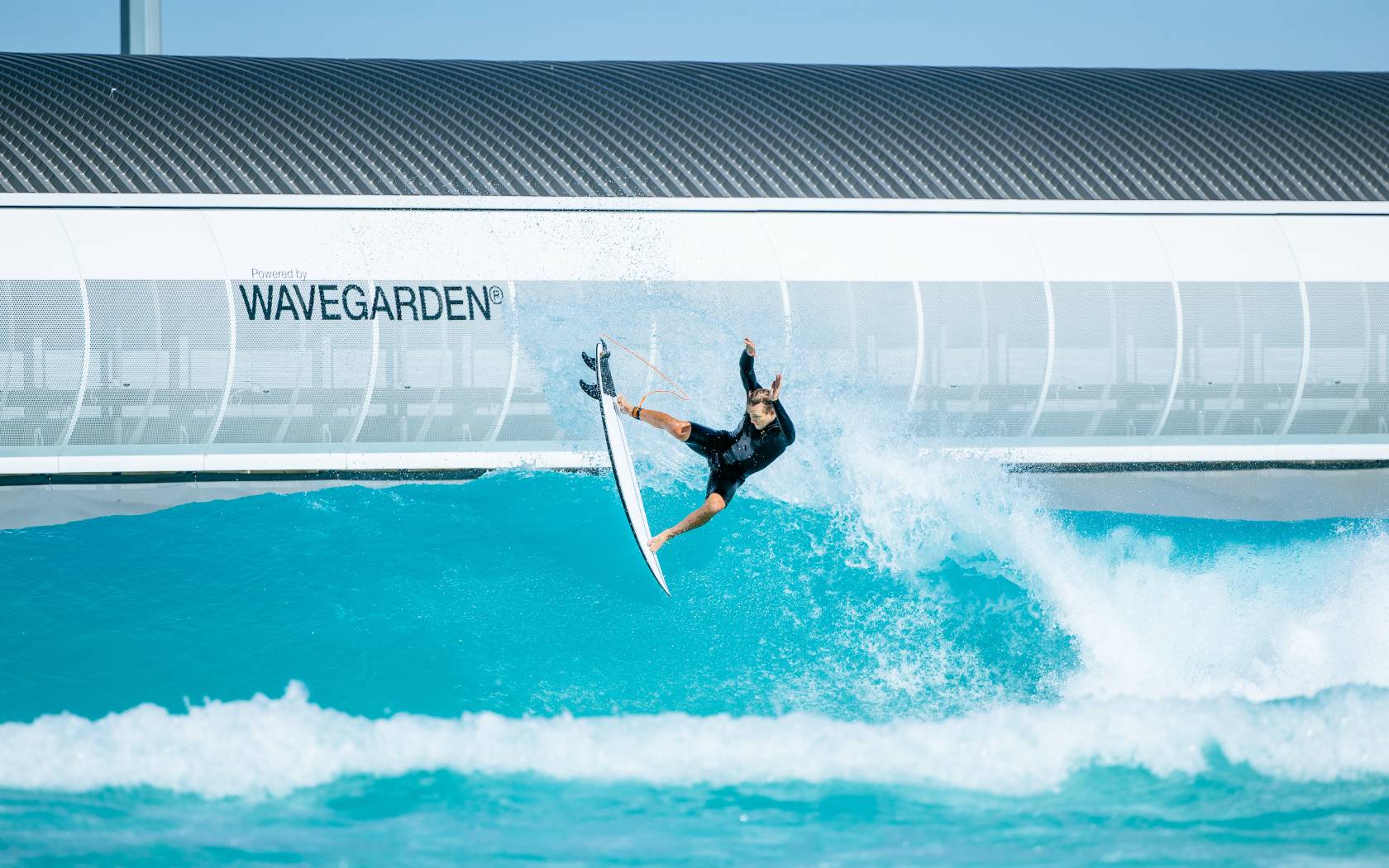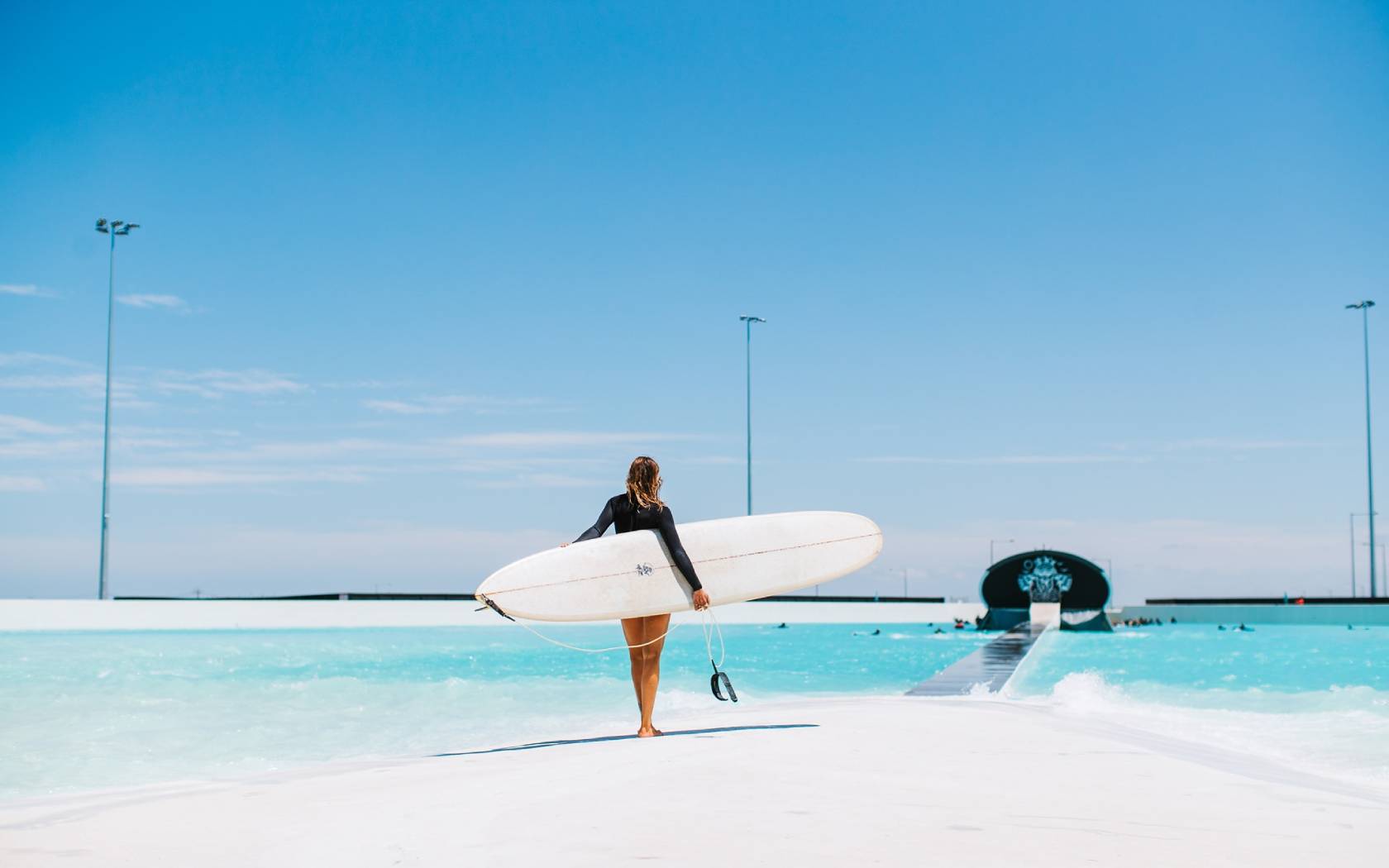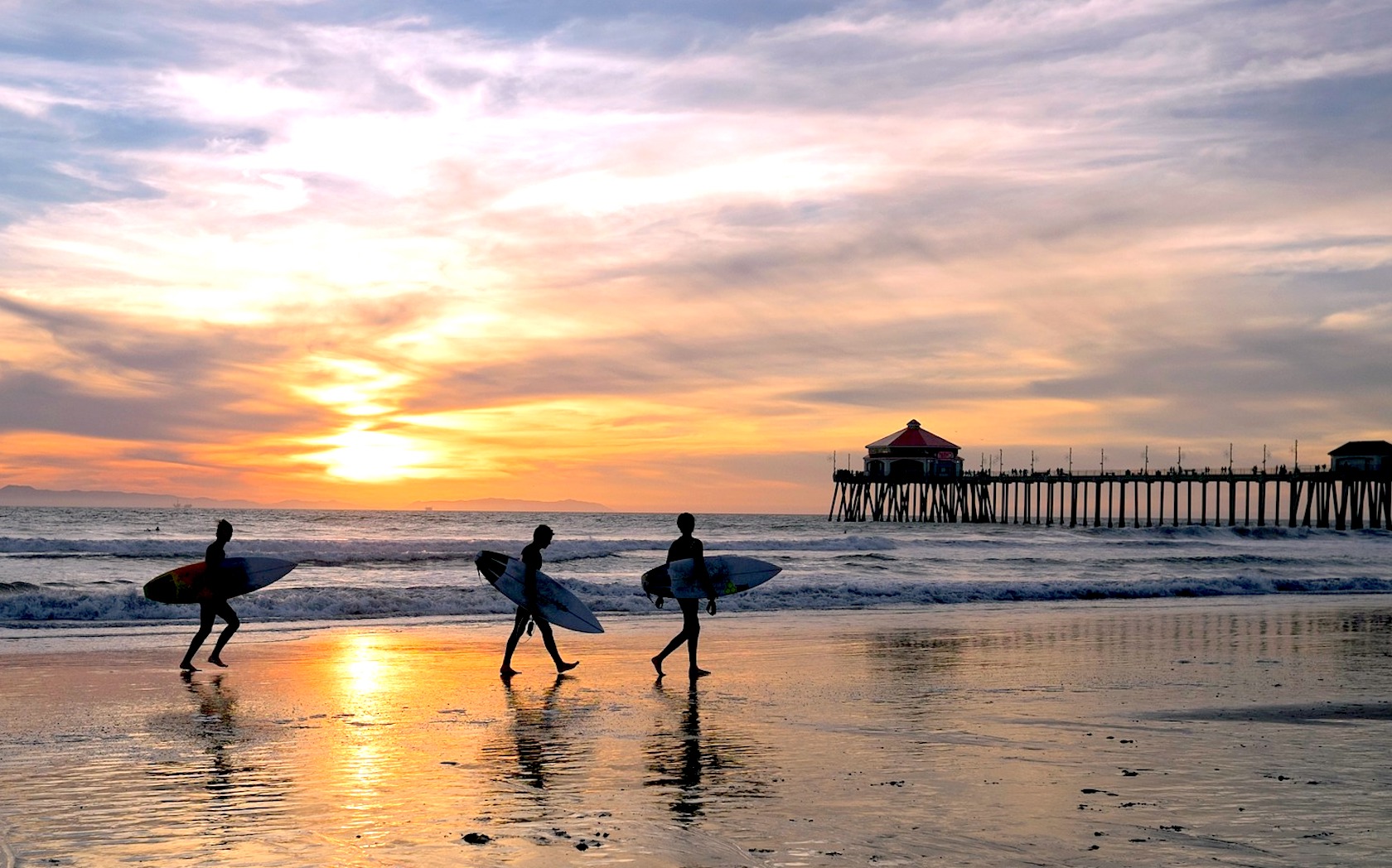A Beginner’s Guide To Surfing In Southern California
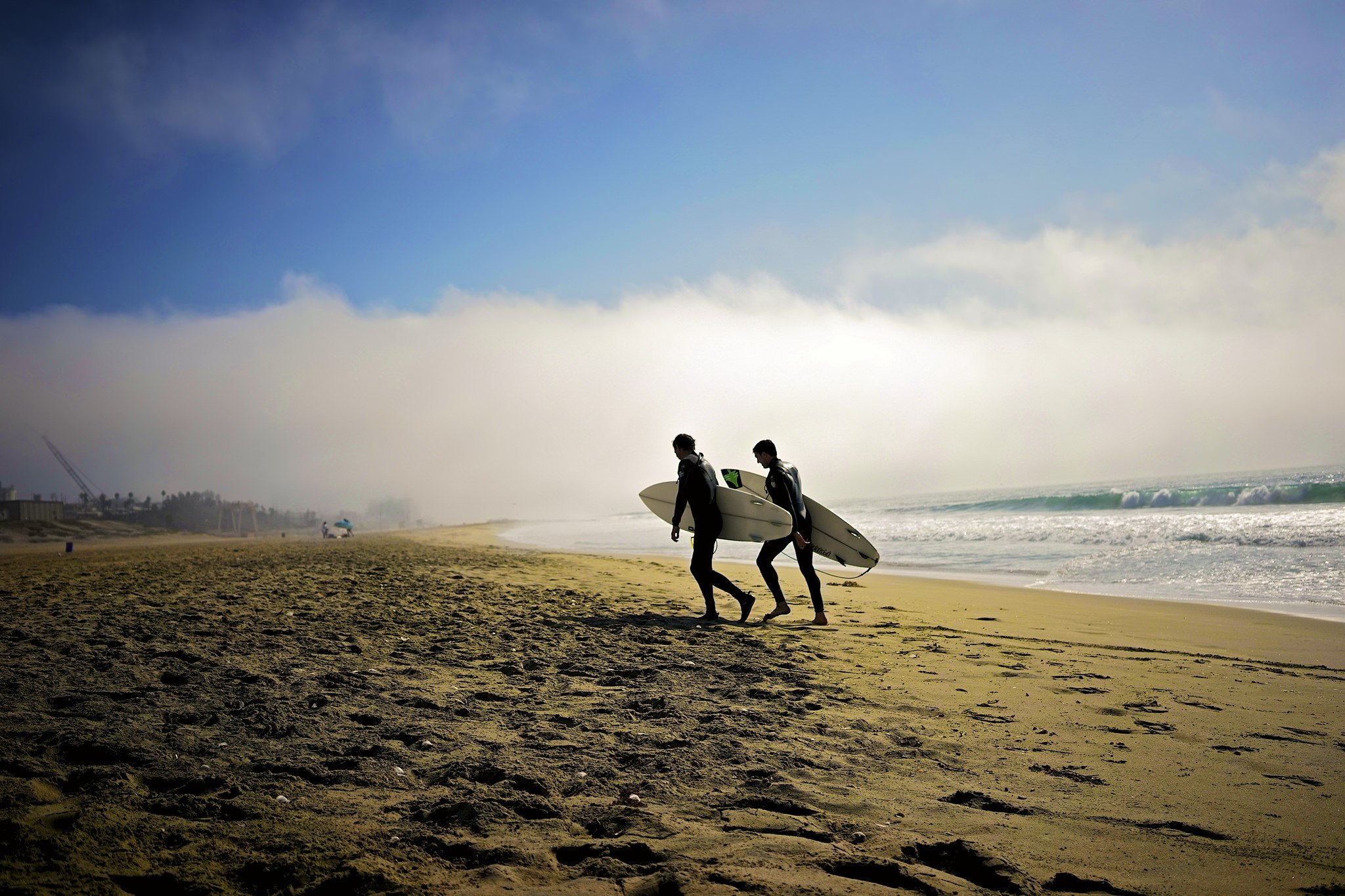
Scott is a freelance writer. He has lived more of…
The beaches of Southern California represent the sunny golden coastline of perpetual summer – from Ventura all the way down to the La Jolla cliffs in San Diego. While it’s not the place surfing began, it is the place that popularised the sport. When one speaks of Malibu Beach, mental images abound of folks spending lazy days cruising the point, high fiving friends on their way through the line-up (where surfers wait for the wave), of friendly faces and a supportive audience. That time has passed. Blame The Beach Boys, blame the film Gidget, blame Laird Hamilton for shooting the pier on a stand-up-paddleboard, but surfing and SoCal go together like a meat pie and tomato sauce and everyone wants a bite.
Don’t be fooled, these days line-ups are crowded and competitive and if you don’t know what you’re doing, someone with a face tattoo is going to tell you what you’re doing wrong in words that we can’t print here. But there are plenty of beaches in Southern California that are well suited for those at the beginning of their journey to become the next Kelly Slater or Stephanie Gilmore.
For beginners, the beaches of LA will be the most accessible. If you plan to stay in Venice or Santa Monica, it’s easy enough to hire a board from the boardwalk and throw yourself into the slamming waves that break along the couple of kilometres of beach. But while surfing LA’s Westside beaches is convenient, it’s not very much fun. If you intend to learn to surf you need to find waves that will push you as gently as a parent does an infant on a swing.
What you’ll need
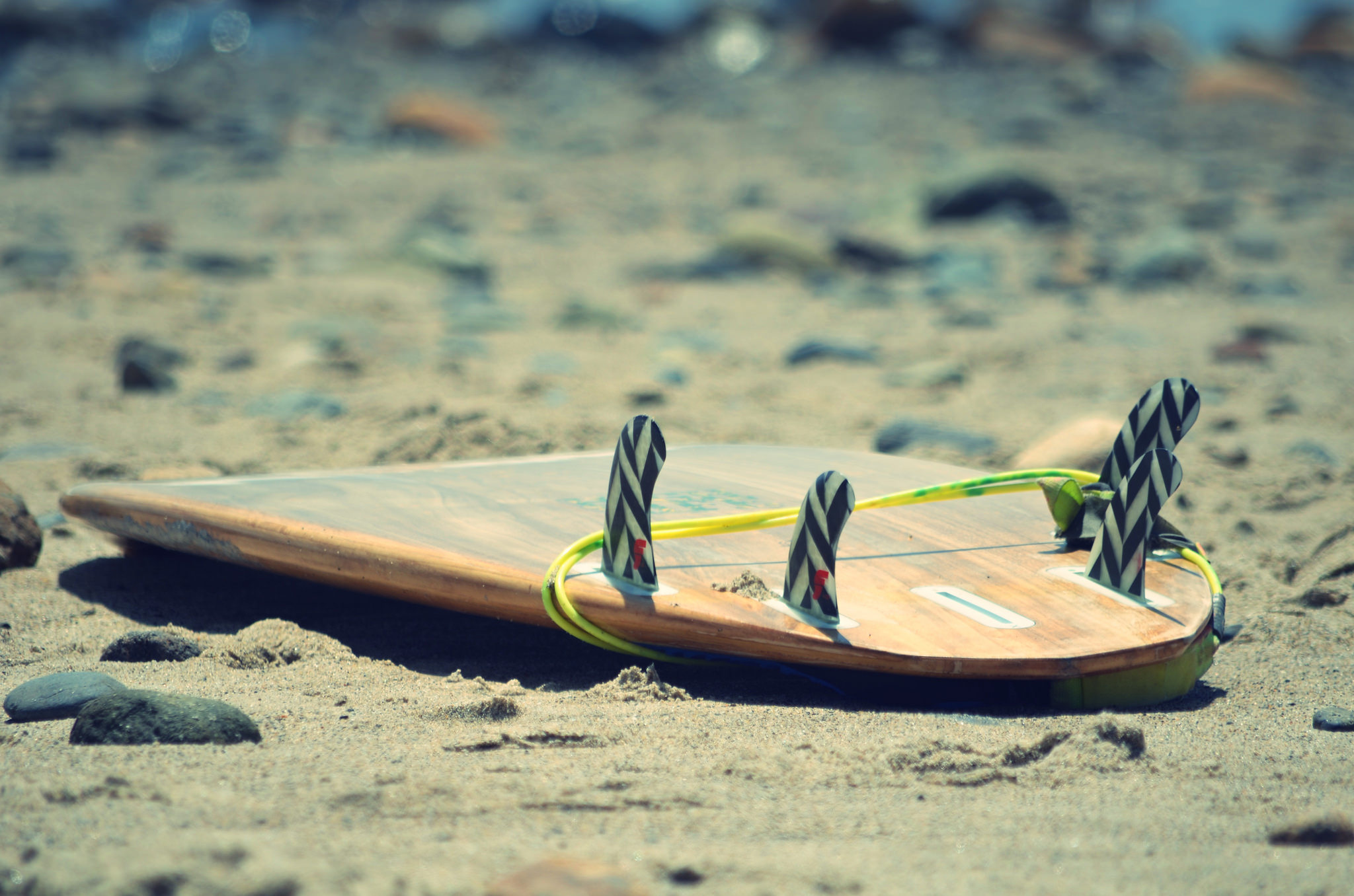
If you have someone at home with a Costco membership, bring the card along. Foam boards can be purchased for $120AUD, much cheaper than any hire deal if you plan to surf multiple times. Also, you’re going to need a car. It’s a reality that to reach obscure destinations toting an eight-foot piece of foam, you’ll need transport that can carry it. If you can, hire a wagon. Better yet, hire a vintage Volkswagon.
Otherwise, you can purchase soft-racks for any standard sedan for about $30. Having your own transportation is important because if you don’t like the look of the surf or crowd at one spot, you can just move along the coast a little. The anticipation of pulling into car parks and checking the scene is about 10 percent of the fun of surfing. But where to go?
The ultimate beginner surfer’s road-trip
First stop: County Line

County Line is so named as it sits on the border of Ventura and Los Angeles Counties. It’s a good hour drive north of LAX and its isolation is part of the reason it’s a fine place to learn. The waves here are gentle enough, and with the beach being so wide, there’s plenty of room to spread out. Beach parking is free; simply pull in either side of the Pacific Coast Highway. It’s also a damn beautiful spot to surf as the beachside hills are empty of anything other than scrub and rock.
Despite being only a short drive from Malibu, you feel as though you’re about a million miles from civilisation. The water here can get cold and a wetsuit is recommended year-round. More experienced surfers will be chasing waves at the rocky points at either end of the beach, leaving the middle to those with more stoke than skill. Across the road is Neptune’s Net, one of the best fried fish joints of the many that sporadically dot the ocean-front highway.
Stop two: El Porto
Heading back towards town, you’ll find the most learner-friendly wave in El Porto, Los Angeles. While not exactly an easy wave to ride, El Porto’s qualification is its room to move. Being easily accessible comes at a cost – competition for parking can be cut-throat at times, but the lack of extensive car spots keeps numbers in the water at practical levels.
The scenery could be better. The beach’s name derives from a deep offshore channel that finds its way toward shore making it a practical place to park large oil-laden ships, and once out in the line-up, a look over the shoulder towards shore will reveal a large petrol refinery, a steam power plant, and a sewage treatment plant. Then, in one of those many juxtapositions that make LA an interesting city, look south of El Porto and you’ll see the multi-million dollar homes of half the LA Clippers, the NHL’s LA Kings, and a few tech moguls. If you’re in LA proper, El Porto is your best bet for friendly vibes and decent waves.
Stop three: The O.C.

Further south the water keeps getting warmer – leaving LA County you enter the O.C. Yes, the Orange County. It’s a strangely homogenous place, where the beach sands are white, everyone seems to own a yacht, and a four bedroom home is considered quaint. It was in the construction of a marina at Doheny State Park that a rather good wave was destroyed and a rather weak wave, perfect for learners, has remained.
Doheny is actually a very decent place to camp. Your site will be only a short walk over a sand bank to the waves, and sleeping in a tent offers an interesting soundtrack of the nearby interstate and the crash of waves. This spot is very popular with ageing longboarders and though it can get busy, beginners are helped by the local crew who seem more interested in hanging out than surfing. It isn’t always breaking here but when it does, it’s probably the easiest wave around. Booking for the campsites is essential and nearly impossible on weekends during summer.
Stop four: Trestles
Trestles in San Onofre State Park is the best wave in Southern California, depending on who you talk to. Running a good kilometre down a pebble rock point, this is where the annual WSL pro surf competition is held. San Clemente is the closest town, but for the most part the wave is located on land that was formerly a US Marine base. Depending on what part of the wave you’re trying to reach, it can be up to a 30 minute walk from carpark to the beach.
Locals zip along the flat concrete beach path on skateboards and bicycles with surfboards underarm. Beginners shouldn’t even bother trying to find a wave at the majority of spots here – San Clemente is home to more pro surfers than anywhere else on earth. However, at the very bottom of the point is a spot called Old Mans, and as the name would suggest, it’s mostly populated by longboarding old gals and gents. If you camp the night at nearby San Mateo Campground ($60AUD), your pass is also valid for the San Onofre beach parking which usually costs $20AUD. It’s worth it to avoid the walk.
Stop five: San Diego
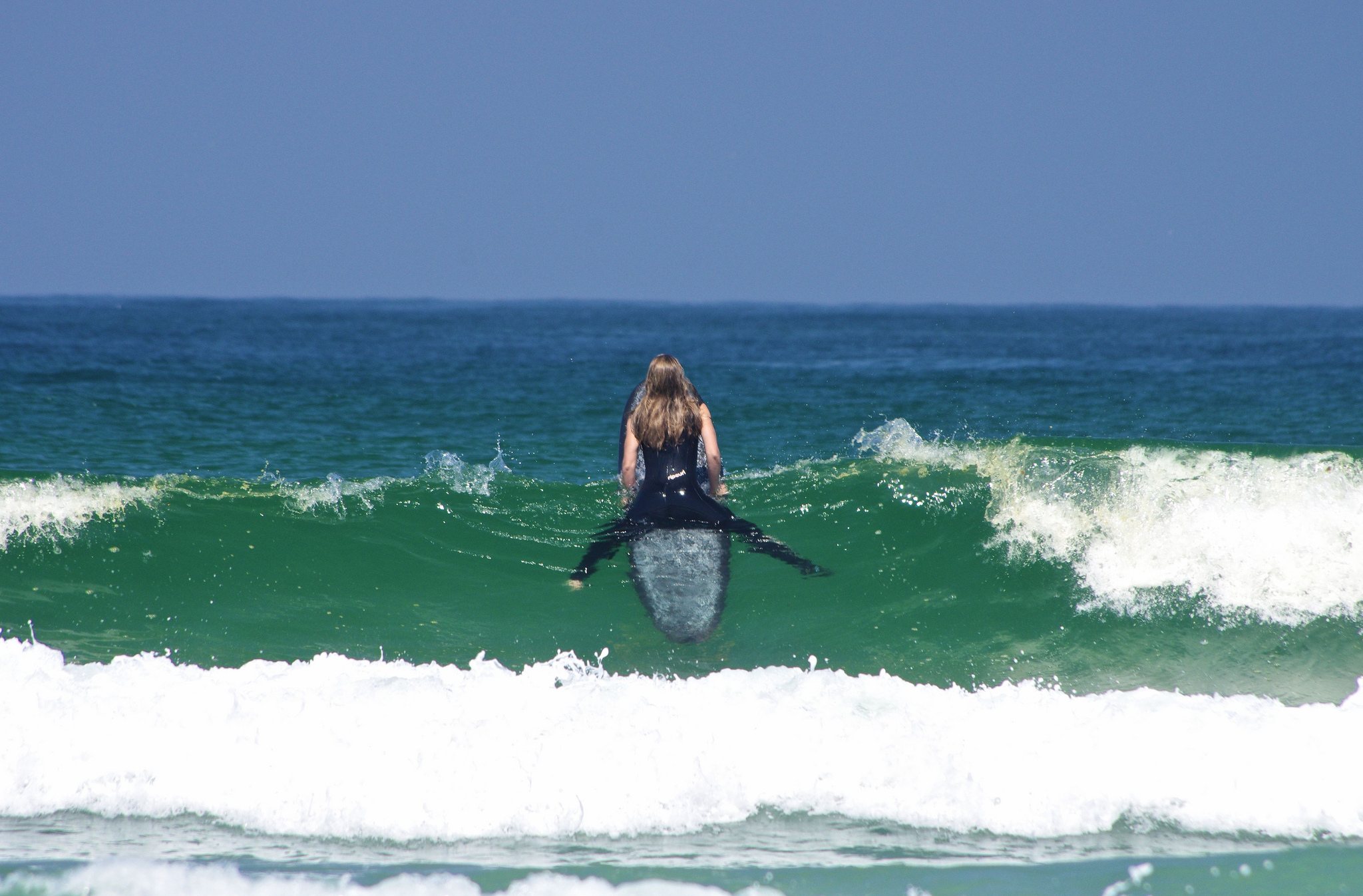
San Diego is often overlooked by visitors to Southern California, but is definitely worth a visit. It’s like a post-rehab version of LA, all clean and mature and espousing healthy living. North County San Diego is probably the best place to be a surfer in Southern California: miles of beaches keep the crowds to a minimum and a friendly laid-back vibe permeates practically everything.
Many moons ago, in the seaside town of Encinitas, an Indian Guru named Swami convinced a bunch of his followers to buy him some land for a “self-realisation” ashram overlooking the sea. Little did they know, it also overlooked a rather excellent longboarding point that now often plays host to those in search of inner harmony and tranquillity of a different kind. Swami’s is an easy wave where hot-dogging longboarders seem somewhat content to run circles around those with less skill. Post-surf, a restaurant also named Swami’s offers delicious healthy meals that will help you develop that Southern Californian glow.
RELATED: THAT DOG SURFING COMPETITION HAPPENED & IT WAS GLORIOUS
(Lead image: Aaron Guy Laroux/Flickr)
Let’s go surfin’ now, everybody’s learning how, come on a safari with Qantas flights to LA here.
Scott is a freelance writer. He has lived more of his adult life abroad than in his home country. He currently resides in Los Angeles where he can be found surfing dodgy beach-breaks. With his wife, he cycled across America and blogged about it at BIKEGANG.cc.



